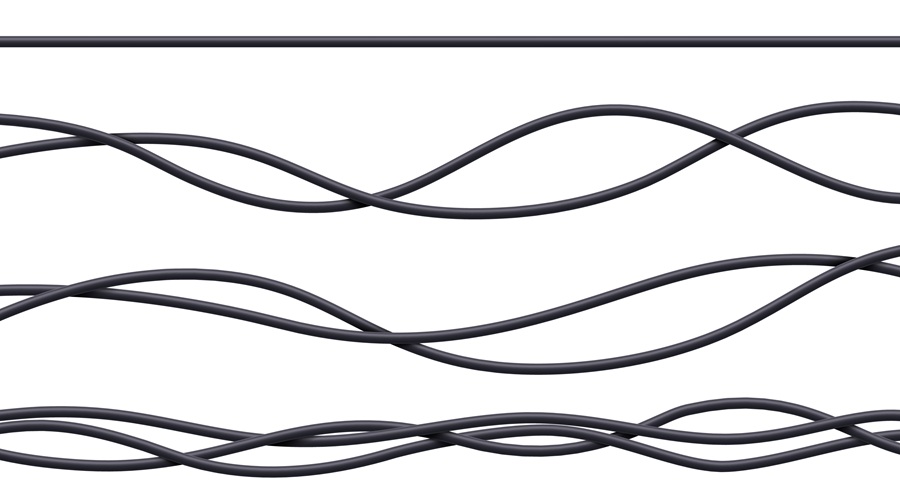You might think of wire and just picture a fence, or maybe a coat hanger. But wire is actually used in way more things than most people realize. It shows up in your house, your car, your kitchen, and even inside electronics. It’s not just one type of wire either—there are tons of shapes, sizes, and ways it’s formed to make different parts and products. And behind all that are companies that shape those wires into the exact forms needed to keep things running smoothly.
Let’s break it down and see how wire has worked its way into almost every part of our daily lives—and why it’s way more important than it gets credit for.
It All Starts with a Spool of Metal
Before a wire becomes something useful, it starts as just a long, thin piece of metal. Usually, it’s rolled up on a big spool. This metal can be steel, aluminum, copper, or other materials, depending on what it needs to do. For example, copper is great for carrying electricity, while stainless steel is better for something that needs to be strong and not rust, like in your dishwasher.
But a wire by itself isn’t very helpful until it’s bent, shaped, or coiled into something that works for a specific job. That’s where wire forming comes in.
Shaping Wire Into Useful Things
Wire forming is basically the process of bending and twisting wire into the exact shape needed for a certain product. It can be done by hand, but most of the time, machines are used to do it super quickly and with really high accuracy. These machines can make loops, zigzags, coils, hooks—pretty much any shape you can imagine.
There are wire forming companies that specialize in this kind of work. They take that plain wire and turn it into things like parts for cars, frames for chairs, racks for ovens, and even those little metal clips that hold papers together. If you’re ever curious about what goes into making those metal pieces that seem so basic, it’s actually a whole world of custom shaping and design.
Where You’ve Seen Wire Without Even Noticing
Wire is sneaky. It’s hiding in plain sight all around you. Here are some examples where wire shows up without most people even realizing it:
- In the kitchen: Wire racks in ovens, toaster trays, dish racks, and even wire whisks.
- In furniture: The springs inside your couch or mattress, chair frames, or metal legs.
- In vehicles: Tiny clips, brackets, and springs help hold everything together or let things move the right way.
- In electronics: Even if you don’t see it, wire helps carry electricity and connect different parts inside a phone, speaker, or computer.
- At the store: Shopping carts, display racks, and storage shelves are often made from bent wire.
- In sports equipment: Batting cage nets, bike baskets, and even helmet parts use wire frames or supports.
It’s wild how many wire-formed products are around us all the time. A lot of them don’t even look like “wire” anymore once they’re shaped and finished. They just look like normal stuff you use every day.
Why Wire Is So Popular for Making Things
There are a bunch of good reasons why wire gets used in so many products. One of the biggest is flexibility—literally and figuratively. Wire can bend into lots of different shapes, but it can also be made strong or soft depending on how it’s treated. That makes it perfect for both tiny clips and big industrial shelves.
It’s also cost-effective. Wire doesn’t waste much material when it’s shaped, which helps keep costs lower. That’s especially important in manufacturing, where making thousands or even millions of parts quickly and cheaply matters a lot.
And because wire can be shaped with high precision, it works well in designs that need parts to fit just right. Think of something like a car seat’s spring system—those wires have to be shaped exactly or the seat won’t feel right or hold up over time.
Behind the Scenes: Who Makes This All Happen?
Wire forming might not seem exciting at first, but the companies that do this work are like the unsung heroes of the manufacturing world. They help other businesses by making the parts they need, whether that’s a custom wire shelf for a new fridge design or a batch of spring clips for electronics.
A lot of these companies also work closely with engineers and designers. That means they’re not just bending wire, they’re problem-solving too. They have to figure out how to make a part that works perfectly, lasts a long time, and fits into whatever product it’s being used for.
Some companies also do finishing work—things like coating the wire so it won’t rust, polishing it to look nice, or even welding pieces together. That way, the final product is ready to go right from the shop floor.
So, Why Does Any of This Matter?
It’s easy to overlook things like wire when they’re not flashy or obvious. But when you stop and think about it, wire forming plays a big role in how our world works. Without it, we’d be missing tons of items that help us cook, clean, build, and move.
The cool thing is, even though wire seems simple, the process behind it takes a lot of skill and precision. It’s one of those things that feels invisible until it’s not there. So next time you see a wire rack or a springy clip, you’ll know there’s a lot more going on behind the scenes than meets the eye.
What to Take Away
Wire might not get much attention, but it deserves some credit. It shows up in nearly every industry—from cars and kitchens to electronics and furniture—and it plays a quiet but important role. Wire forming turns plain metal into parts we use without even thinking about it.
So yeah, wire isn’t just for fences. It’s basically everywhere. And now you know why.
Let me know if you want to learn more about how wire forming works or how machines bend wire into all those shapes. It’s cooler than it sounds, promise.










